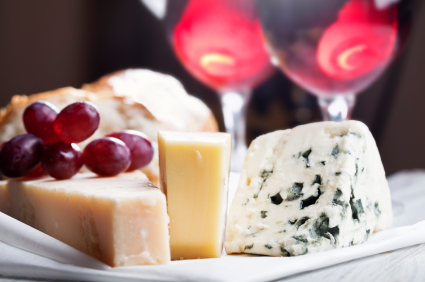Selecting the Best Cheese for a Kidney Diet
 Cheese is a featured ingredient in this month’s DaVita recipe collection, Kidney-Friendly Cheesy Appetizers. Almost everyone likes cheese, but kidney patients are told to limit or even avoid it due to the phosphorus content. In addition, some cheeses are quite high in sodium.
Cheese is a featured ingredient in this month’s DaVita recipe collection, Kidney-Friendly Cheesy Appetizers. Almost everyone likes cheese, but kidney patients are told to limit or even avoid it due to the phosphorus content. In addition, some cheeses are quite high in sodium.
Not all cheeses are created equal. Phosphorus ranges from 20 mg to 380 mg per ounce, based on the kind of cheese, whether it is regular versus low-fat or fat-free, and the manufacturer. In general, processed cheeses and hard cheeses are higher in phosphorus, natural cheeses are lower, and soft cheeses are lowest in phosphorus. Manufacturers are not required to list phosphorus on the label, but you can find it in nutrition analysis books, software programs or online food analyzers. The USDA National Nutrient Database is available for anyone to download and use at no charge.
Sodium content of cheese varies from 5 mg to over 500 mg per ounce, with low-sodium cheese, brie, cream cheese, ricotta, natural cheddar and natural Swiss cheese in the 0 to 200 mg range. Higher sodium cheeses include processed cheese, blue cheese, feta, most hard cheese and soy cheese. Sodium is always available on the nutrition label, so you can compare brands to select the product lowest in sodium. If you buy a higher sodium cheese, choose a strong flavored variety like extra sharp cheddar, feta or blue cheese and use only a small amount.
Potassium content is generally low in most cheeses, ranging from 5 to 100 mg per ounce. There are a few exceptions, such as low-sodium cheese with added potassium chloride. Always check the ingredients and avoid cheese with potassium chloride if you are on a low potassium diet. Protein in cheese varies from 1 to 2 grams per ounce in cream cheese and 6 to 9 grams per ounce in most other cheeses.
Most renal dietitians will agree 1 to 2 ounces of cheese can be included in a low phosphorus diet one or two times a week as long as your phosphorus level is normal and if needed, phosphate binders are adjusted to bind the extra phosphorus consumed. Be aware cheese also contains fat and cholesterol, so it’s best stay within the recommended portion.
My favorite cheese appetizer from the DaVita recipe collection mentioned above is the Holiday Cheese Ball—easy to make and goes great with thin slices of apple, pear or low-sodium crackers. Be sure to check out the other cheesy appetizers that are low in phosphorus and a safe choice for your kidney diet this season.
Additional Kidney Diet Resources
Visit DaVita.com and explore these diet and nutrition resources:
DaVita Kidney-Friendly Recipes
This article is for informational purposes only and is not a substitute for medical advice or treatment. Consult your physician and dietitian regarding your specific diagnosis, treatment, diet and health questions.

Recent Comments